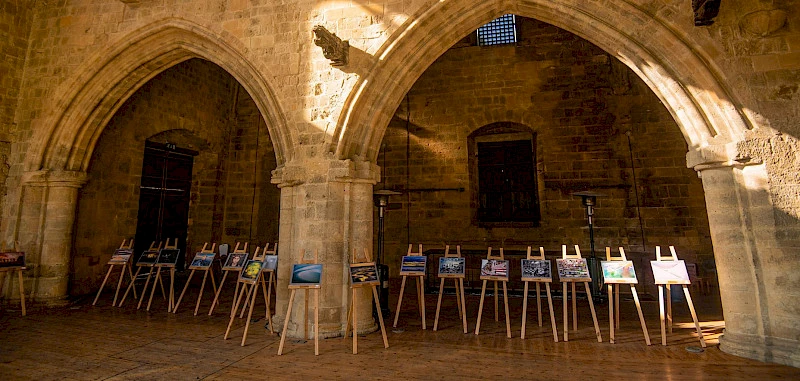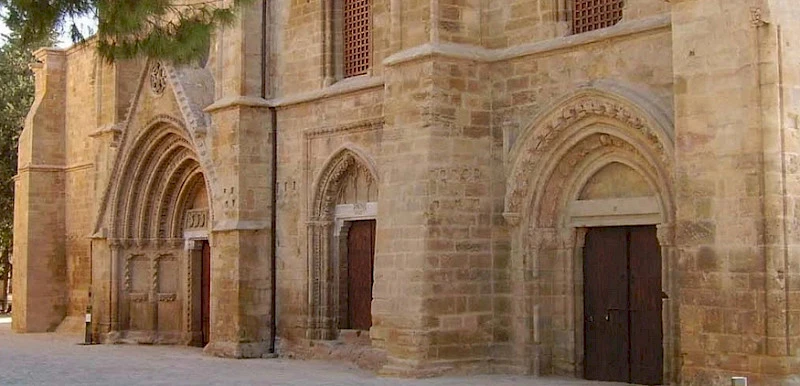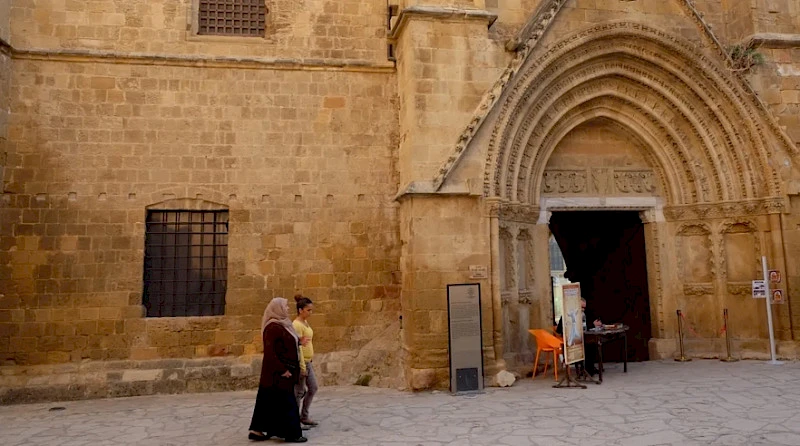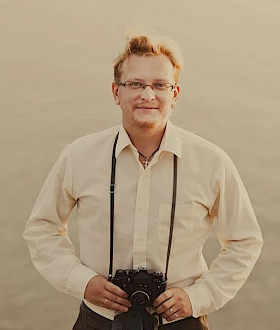Bedesten Cultural Center
Arguably the most versatile landmark in all of Cyprus, if we delve into its history.
First a church, then a market, later a warehouse, back to being a market, attempts to revive it as a temple, and today — a cultural center. Let’s take it step by step.
- Bedesten in Northern Cyprus
- History of Bedesten in Nicosia
- Architecture of the Complex
- Bedesten Today
- Frequently Asked Questions

Bedesten in Northern Cyprus
Bedesten, or Bedestan, is one of the most significant historical buildings in Nicosia, reflecting the city’s multicultural life and diverse past. It is located in the Selimiye Quarter of Nicosia, situated between the Selimiye Mosque and Bandabulya.
This structure boasts a long and complex history spanning over a thousand years. Originally built as a church around the 6th century, it was expanded and reconstructed between the 12th and 16th centuries and later transformed into a covered market during the Ottoman period. Today, it serves as a cultural center.
History of Bedesten in Nicosia
Byzantine Period
The early history of Bedesten is archaeologically confirmed by the Byzantine basilica remnants preserved within the current building. These fragments likely date back to the 6th century, believed to be traces of the first Saint Sophia Cathedral in Nicosia.
Lusignan Period
During the reign of the Lusignan kings, the building’s subsequent history is poorly documented. Some historians suggest that English monks, followers of Thomas Becket, founded a new church dedicated to Saint Nicholas on this site. Alternatively, Bedesten may have continued as an Orthodox temple. In the 14th-15th centuries, the church was expanded and reconstructed multiple times, preserving the old Byzantine apse.
Venetian Period
Under Venetian rule, Bedesten was used by the Orthodox Church as an episcopal building and dedicated to Panagia Odigitria. The most notable part of the building — the northern façade — was constructed during this period. Patrons were noble Cypriot families, as evidenced by the crests carved above the main entrance. A dome and a large central apse were also added, replacing the original Byzantine features.
Ottoman Period
In 1573, shortly after the Ottoman conquest of Cyprus, the new authorities repurposed the building as a bedesten — a covered textile market. Later, it became a food market and, by the 1760s, a center for trading foodstuffs among Turkish, Greek, and Armenian merchants. By 1873, it was converted into a flour warehouse, followed by a wheat storage facility, and in the 1930s, it served as a general goods warehouse for the administration.
British Period
During the early years of British colonial rule, plans were made to reconvert the building into a church dedicated to Saint Nicholas. However, opening a religious site within 100 yards of a mosque was prohibited. Nevertheless, the building underwent reconstruction.
After the opening of the new Bandabulya Municipal Market in 1932, the building ceased to be used as a market or warehouse but was utilized for local administrative storage.
In 1935, the Department of Antiquities moved several medieval tombstones from the Ömerge Mosque to the building. For a time, these tombstones were displayed in one of the rooms alongside a richly decorated Ottoman-era ceiling.

Architecture of the Complex
Bedesten in Nicosia stands out stylistically from other covered markets of the Ottoman Empire, incorporating elements of French, Venetian, and possibly Spanish Renaissance architecture.
The layout is based on a cruciform structural style dating back to the Byzantine period, while the building features a high-ceiling nave characteristic of Gothic style. The southern double nave is a remnant of the Byzantine church, with its middle section being the oldest part of the building.
The northern nave’s exterior showcases the richest decorations and stone masonry. This façade faces the front arches of the Selimiye Mosque and includes the entrance, marked by an ornately decorated Gothic-style gate with elements of Italian Renaissance architecture. The gate is adorned with a statuette of Saint Nicholas, crests on either side, and numerous animal figurines and gargoyles.
Bedesten Today
From June 2004 to 2009, the United Nations Development Programme carried out a reconstruction project funded by the European Union and local administration. During the restoration, the building’s walls were cleaned, and the vaults reinforced using traditional building materials and techniques.
In November 2009, following a five-year restoration (awarded the Europa Nostra Prize), Bedesten reopened as a multicultural venue and exhibition space, attracting thousands of visitors annually. Among its events are weekly Sufi dance shows. The building also hosts the Nicosia Walled City Jazz Festival.

Frequently Asked Questions about Bedesten
How much is the entrance fee to Bedesten?
Outside of events, the building is not open to visitors. During concerts and exhibitions, the cost varies depending on the event — some events are even free of charge.
What interesting places are nearby?
Close by is Nicosia’s most important mosque — Selimiye. Other nearby mosques include Haydar Pasha and Laleli. Additionally, the Lusignan House, the oldest hammam in Cyprus, and the Ottoman caravanserai Büyük Han are all within walking distance.
How to get to Bedesten in Nicosia?
Bedesten is located in the center of Cyprus’s capital, Nicosia. Below is a map for the exact location. Take a bus to the stop at Kyrenia Gate, from where it is less than a kilometer’s walk to Bedesten, or catch a taxi often stationed near the old city entrance.
For drivers: there is parking available near the landmark. Here are the coordinates for navigation: 35.176040907277056, 33.364684949797734.
Follow us on Instagram and Telegram to discover everything about Northern Cyprus landmarks!

